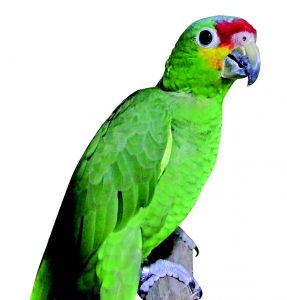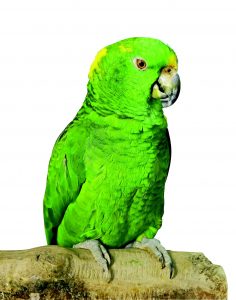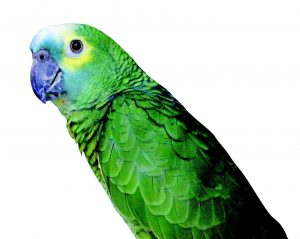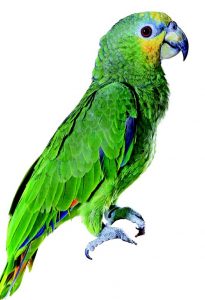Many parrot lovers are in love with these vibrantly colored and talkative birds. The orange-winged amazon, however, is a species set apart from the rest of its parrot cousins.
Below, parrot keeper Patrick Chuakay Go tells us more about these brightly-colored birds.
How different is the orange-winged amazon parrot from its parrot cousins?

The orange-winged amazons are a very underrated species. This is probably because of their wildly-col-orful appearance as opposed to their relatives, the blue-fronted amazon. It could also be because unlike other amazon parrot species, the orange-winged am-azon is not as good a “talker” as the others.
However, compared to other parrots, most especially cockatoos, they are naturally independent, self-as-sured, confident birds that can live a full life even if they were kept as companion birds.
How did they get here?
The local population we have in captivity here in the Philippines can mostly be traced back to importation by the world famous breeder, Mr. Antonio de Dios of Birds International.

Mr. de Dios saw the beauty in this species and imported brood stocks, which readily took to our climate and bred successfully. I’ve also heard of a few imports caught in the wild, but I never really saw them in any of my colleagues’ facilities.
What’s to love about them?
What I like most about the orange-winged amazon species is their confident and independent nature, which naturally matches my own attitude as a businessman. They’re not needy birds and don’t demand too much attention. They’re beautiful to look at, and fun and easy to have around.
Is there a need to breed them in captivity?
I believe there are many parrot species whose numbers in the wild are declining because of illegal trade and poaching. Even before I started keeping parrots for breeding, I knew through research that such was the case in the wild.

Therefore – and I thank my mentors from Olaylee Aviary, namely Ms. Nora dela Paz And Ms. Lily Dee, for what I learned – I have always believed in purchasing only parrots bred in captivity. Maybe someday our captive-bred parrots will be able to help re-populate and stabilize the numbers in the wild. And if that is not possible, we can at least by discourage the newer generation of parrot keepers from buying parrots caught in the wild. This can be done by them with captive-bred ones instead. This will have a more positive effect on the dwindling wild population.
How do you keep them healthy and happy?

Mr. Antonio de Dios, owner of Birds International Inc., along with Ms. Nora dela Paz and Ms. Lily Dee of Olaylee Aviary, warned me about obesity in amazon parrots. We must feed them fresh fruits and vegetables only.
I remember being instructed from the very start to visualize myself in the Amazons’ natural habitat. From there, one should research on what fruits and plants are available locally to try and closely emulate their diet using what’s available in the market. I also try to give my orange-winged amazons less seeds, especially the fatty sunflower seeds that people normally feed to their parrots.

We feed our amazons twice a day (mornings and afternoons) with chopped fruits and vegetables, and in the middle of those meals we give them a few safflower seeds as treats.
How else do you prevent obesity in orange-winged amazons?
Because they’re prone to obesity, we were directed to watch their diet and give them ample space to fly and exercise. Housing them in an adequately-sized cage or aviary would be ideal. Here at our private aviary, we place their food and water bowls away from their perches to encourage them to move around to feed.
Do they need grooming?

Since we keep them in our aviary, we don’t really groom their wings or beaks at all.
Can you describe their personality?
I think amazons in general have very pleasing personalities. They love to show off and get themselves noticed. However, orange-winged amazons can be quite loud in getting their owner’s attention as compared to their yellow-crowned amazon cousins.
How big do they grow?
They don’t grow to be as large as their double yellow-headed amazon cousins. They will be around 8 to 9 inches from head to tip of the tail upon maturity. Size-wise, they are very manageable yet not too fragile-looking like the smaller amazon species.
How do you bond with this colorful parrot?
The general rule in creating a bond with one’s pet amazon is to be consistent with training. Spend time with them everyday and always make them feel comfortable with your handling.
Take them out of the cage everyday and teach them to “step” onto your fingers, always reassuring them that they’ve done the right thing through positive reinforcement. Give treats when they do something correctly.
Your bond with your amazon will grow stronger with each day. The bond may grow so strong that at maturity, they will think of you as their mate!
This appeared in Animal Scene magazine’s August 2018 issue.






